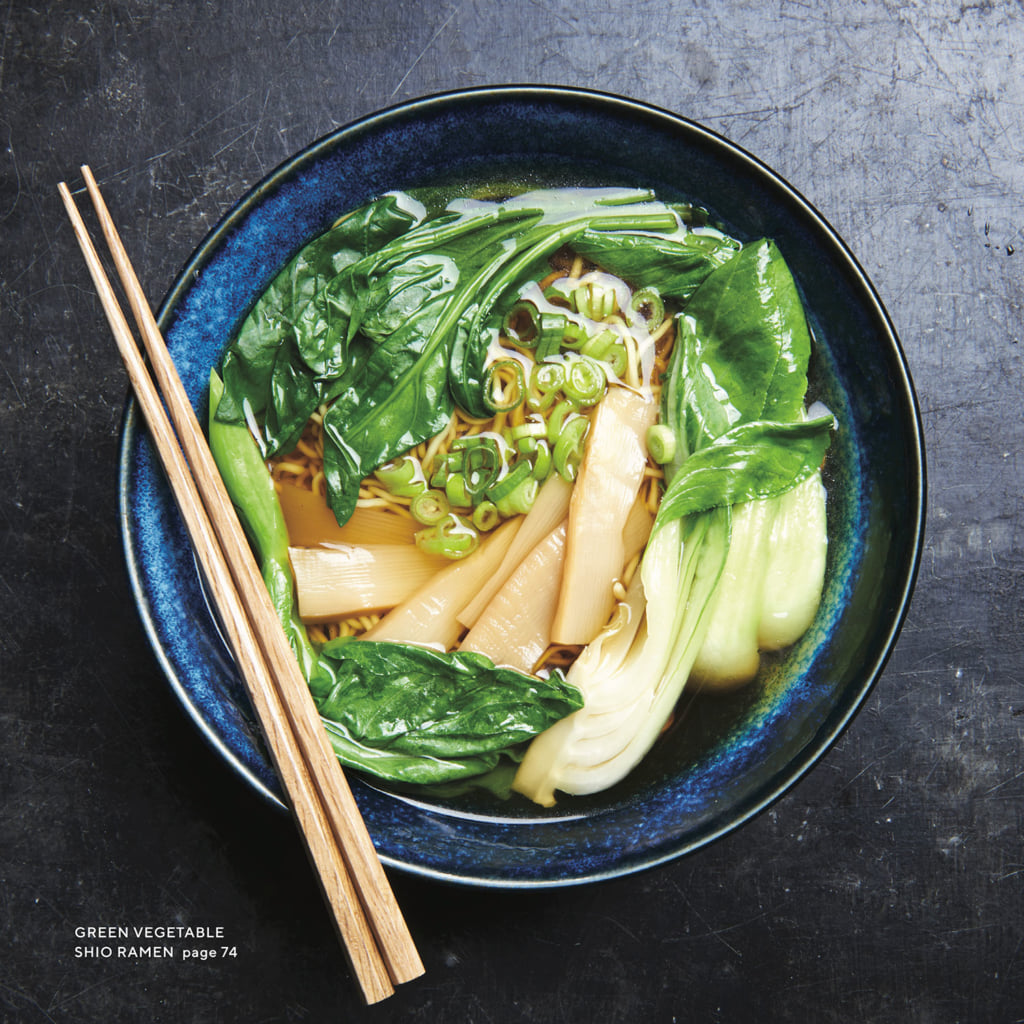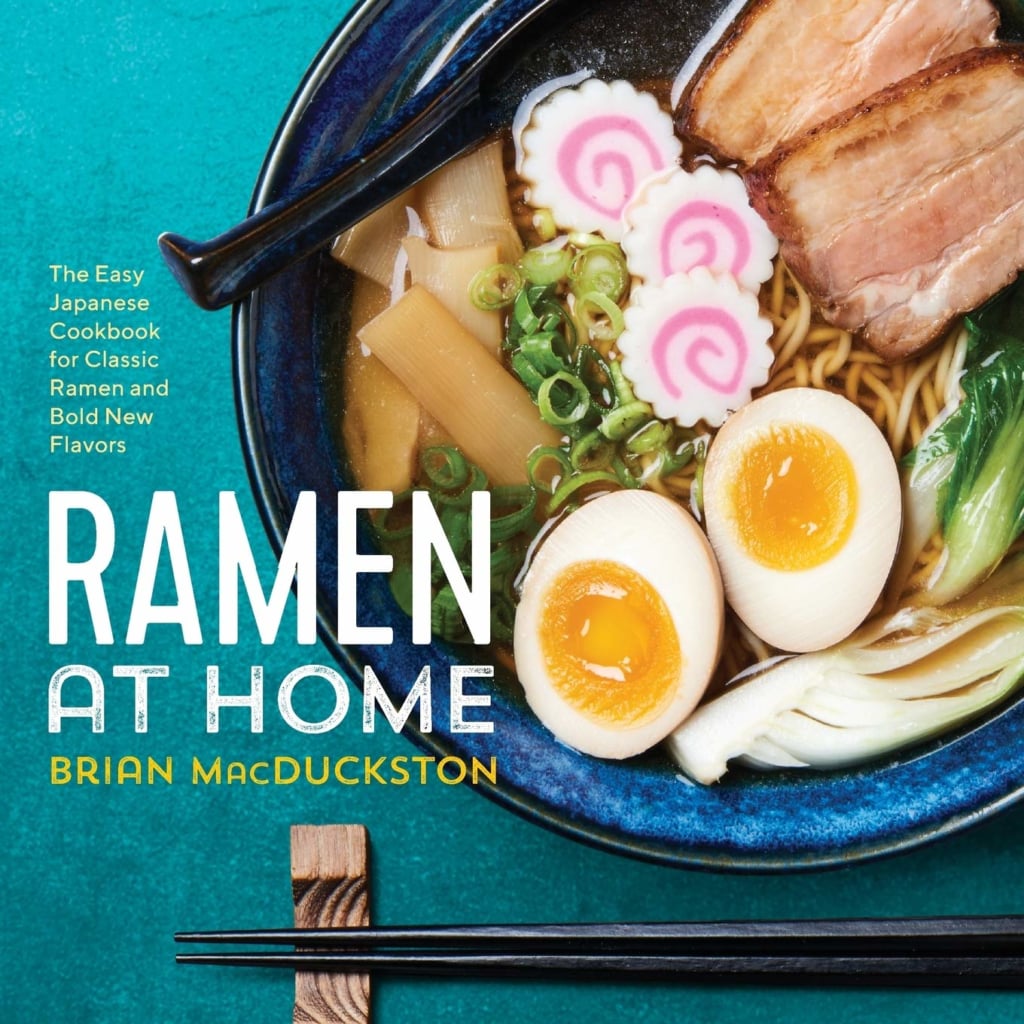Recipe for Green Vegetable Ramen by Brian MacDuckston
'Shio ramen' is a speciality from Tokyo with a salt base and a very clear broth that pairs well with vegetables to make a light meal.

From “Ramen at Home” by Brian MacDuckston, published by Rockridge Press. Copyright © 2017 by Callisto Media, Inc. All rights reserved.
‘If you’ve made soup, you can make ramen’, Brian MacDuckston declares in the introduction to his cookbook Ramen at Home, which contains one hundred recipes for this hearty Japanese dish. After offering a few tips about equipment and ingredients, which he has gone out of his way to make as accessible to western cooks as possible, he shares his favourite recipes, like this shio ramen, a speciality from Tokyo that has a salt base and a very clear broth, a sign of its light quality.
He offers a version made using green vegetables, and specifies that this can be turned into a fully vegan version simply by replacing the dashi broth with one made from kombu, a Japanese seaweed, and mushrooms. For this recipe, the chef also explains that it is preferable to avoid using overly leafy green vegetables like lettuce, which tend to become soggy in the broth. It is better to use spinach, cabbage (ideally Chinese), or, better still, komatsura, Japanese mustard spinach.
Serves 4
Ingredients
120 ml vegetarian shio tare
1.2 l clear vegetarian broth
750 g fresh noodles, such as chukasuimen noodles
12 to 16 slices menma
Green vegetables, to garnish
Negi
Method
Start by filling a large pan with water and bring to the boil over a medium-high heat.
Half-fill the ramen bowls with water to heat them up. The bowls should be warm to the touch, but not scalding. Discard the hot water and dry the bowls with kitchen roll or a clean towel.
Put the tare and the broth in a medium-sized saucepan. Mix and bring to the boil over a low heat.
Cook the noodles in the large saucepan of boiling water. If the ramen noodles are a standard thickness (approximately 1 mm), they will take one to two minutes to cook.
Around 30 seconds before the noodles have finished cooking, ladle the tare-broth soup into the ramen bowls.
Drain the noodles, making sure to remove the excess water. Delicately place the noodles in each bowl of soup, making sure to keep the presentation tidy.
Add three or four slices of menma and cooked green vegetables and sprinkle the ramen noodles with negi. Serve immediately.
Ramen at Home (2017), a recipe book by Brian MacDuckston, is published by Rockridge Press.
Brian MacDuckston is a journalist who specialises in ramen. He lives in Tokyo and writes articles about ramen restaurants around the world, and shares them on his blog Ramen Adventures. He also regularly collaborates with Condé Nast Traveler. Ramen at Home is his first book. Brian MacDuckston followed this with Best of the Best Ramen in 2019, a guide to the best ramen restaurants in Japan, only available in Japanese.

'Ramen at Home' by Brian MacDuckston, published by Rockridge Press. Copyright © 2017 by Callisto Media, Inc. All rights reserved.
TRENDING
-
A House from the Taisho Era Reveals Its Secrets
While visiting an abandoned building, Hamish Campbell discovered photographs the owner had taken of the place in the 1920s.

-
The Taboo-Breaking Erotica of Toshio Saeki
The master of the 1970s Japanese avant-garde reimagined his most iconic artworks for a limited box set with silkscreen artist Fumie Taniyama.

-
With Meisa Fujishiro, Tokyo's Nudes Stand Tall
In the series 'Sketches of Tokyo', the photographer revisits the genre by bringing it face to face with the capital's architecture.

-
Masahisa Fukase's Family Portraits
In his series ‘Family’, the photographer compiles surprising photos in which he questions death, the inescapable.

-
Hajime Sorayama's Futuristic Eroticism
The illustrator is the pioneer for a form of hyperrealism that combines sensuality and technology and depicts sexualised robots.





